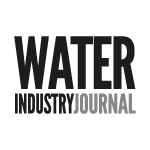ATi UK’s Senior Service Engineer, Mark Holmes, discusses the cutting-edge technologies available for measuring and monitoring sludge blanket, providing optimum efficiency and flexibility through smart, ultrasonic and continuous, real-time measurement.
Measuring and managing the depth of sludge blanket is one of the most critical challenges in the production of good-quality effluent from wastewater treatment plants. Aside from lessening the environmental impact of human waste, modern wastewater treatment plants have embraced advances in science and technology that allow significant, positive inputs, such as producing energy from biogases, such as methane, and in some cases generating revenue streams from processed biosolids, including nutrient-rich fertiliser for farming. However, for these advanced systems to work effectively, one of the most crucial parameters for plant operators to monitor is the total solids, or sludge, as it moves through the plant.
Although the composition and concentration of sludge varies throughout the treatment pathway, understanding the settling characteristics of sludge is vital to optimise control of the plant and wastewater process. Primary sedimentation, biological stages, secondary treatment, effluent quality, and subsequent sludge handling are all greatly affected by how well the settling has been achieved and, importantly, monitored.
Effective Automation to Improve Process Control
By measuring sludge levels in both primary and secondary sedimentation tanks, operators can ensure sludge extraction pumps are used efficiently and ensure poorly settled sludge does not carry over into effluent paths. By measuring sludge levels, operators can study sedimentation characteristics of suspended solids in the plant, understand sensitivities due to disturbances and manage sludge levels to allow sufficient buffering for incoming hydraulic load variations.
While no two waste-water treatment plants are identical, the push to improve efficiency through automation and improved process control is a common theme.
Relying solely on manual sampling means that thorough analysis of plant characteristics and trends is limited to the frequency of sampling, with the addition of labour costs. In a plant with continuous, automatic measurement of critical process variables, there is a wealth of feedback that creates a robustness of system control, capable of rapidly identifying disturbances or operational problems.
Contactless sludge blanket level measurement
For measuring the depth of sludge blanket, two conventional methods are widely used; contact and contactless methods. The contactless method is considered more desirable, as it doesn’t depend on direct measurement by human operation. One leading example of contactless measurement is ATi UK’s EchoSmart, designed for superior sludge level detection in a wide range of water and wastewater applications. The EchoSmart sensor generates an ultrasonic sound wave that propagates through a liquid medium and is reflected back from material that is present in the vessel, which are typically settled solids, suspended solids, or the tank bottom. The sound wave travels at known velocities, providing the ability to convert elapsed time into Range and Level measurements, offering continuous, real-time measurement. The underwater acoustic measurement principle allows the sensor to track well settled blankets, as well as being configured to track dispersed solids, such as ‘fluff’ or ‘rag-layer’.
The EchoSmart sensor does more than just produce a raw signal; it is equipped with an advanced programmable microprocessor and dynamic memory. Through these facilities, the sensor provides all signal control, enhancement and interpretation, and determines the final process measurement. The smart sensor also communicates with an EchoSmart Controller via digital communication, offering greater flexibility in equipment configuration options, enhanced communication capabilities and reduced installation costs.
Flexible, smart networked monitoring
EchoSmart can be used for a wide range of applications and industries, such as sludge thickeners in wastewater, primary or final settlement tanks, and also within the clean water treatment process, including clarifiers on water treatment works. It is adaptable and can be programmed to suit various shapes and tank sizes, with the additional option for turbidity measurement, offering further insight into tank and solids activity, which is useful for less dense blankets.
There are also options available for a variety of installation requirements, including a remote or local controller, a stand-alone system, or alternatively a network of up to 16 sensors can be added to one controller. Communication can be achieved through hard wired connections or radio-link network, which can eliminate the need for costly installation. The system comes standard with analogue and digital outputs, as well as Modbus, but other digital communications can be attained if required.
The EchoSmart sludge blanket level monitor is simple to install and operate, providing an advanced yet user friendly solution, offering cost effective, trouble-free and reliable measurement.
atiuk.com




